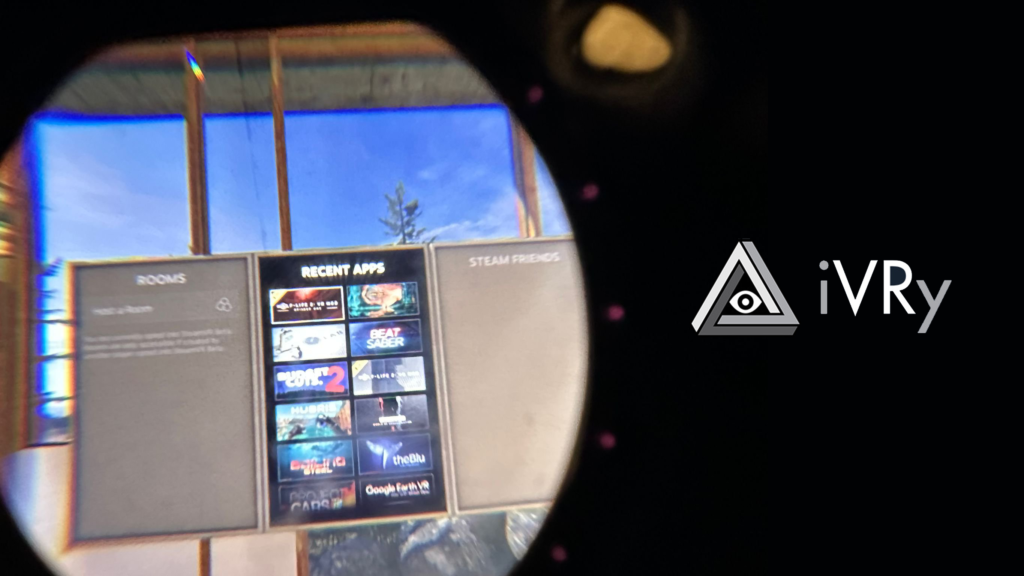The project to get PSVR 2 working as a PC VR headset got SteamVR output working by using extra hardware.
PSVR 2 already does technically work on PC, without any third party tools or drivers, but only in the “cinema mode” where it shows your monitor floating in front of you, and only on specific NVIDIA 20-series GPUs. On PC, this mode also lacks positional tracking.
iVRy, the developer of one of the third party SteamVR drivers for the original PlayStation VR, has been experimenting with PSVR 2 since they got access to the headset in late February.
The original PSVR was essentially an HDMI monitor with light strips tracked by a stereo webcam. PSVR 2, meanwhile, uses a single cable carrying both video and tracking data over USB-C, and iVRy has frequently publicly pointed out that getting it working as a PC VR headset will be significantly more challenging.
In recent months iVRy has publicly outlined the roadblocks and potential issues involved on their Twitter page, at some points even suggesting the project may have hit a dead end and the task may be impossible. But recently they have been experimenting with DisplayPort “sniffer” boards to attempt to discover the exact video input format PSVR 2 expects to go into VR mode – and this has led to a breakthrough, though with a major caveat.
Day #121: We have lift-off!
– SteamVR displaying on PSVR2 @ 120Hz
– Tracking is done with PSVR1
– PSVR1 (on top of my head) + PSVR2 = PSVR3? pic.twitter.com/tWuUUWUszs— iVRy (@iVRy_VR) June 29, 2023
Today, iVRy posted a screenshot purporting to show SteamVR on a PC outputting to a PSVR 2, at the headset’s full 120Hz refresh rate.
However, the breakthrough here was to use extra hardware with custom software between the PSVR 2 and PC.
Sony has hardcoded PSVR 2’s VR DisplayPort output parameters into PlayStation 5, but the NVIDIA and AMD display drivers on PC don’t have this information and the headset only presents its cinema mode, according to iVRy. To work around this, iVRy programmed a Linux PC to act as a “man in the middle”, presenting as a PSVR 2 in VR mode to the Windows PC’s display drivers and providing the necessary DisplayPort parameters to output to it.
This approach gets PSVR 2 working on PC, but means extra hardware will also be required by end users.
iVRy plans to attempt to program a Raspberry Pi Pico board to take the place of the current Linux PC setup, as a template for a potential adapter for end users. iVRy tells us they could provide the design for this adapter, but another company will need to actually mass manufacture it.
The other caveat is that there is no onboard tracking working at all here yet – neither rotational nor positional. iVRy tells us their findings so far suggest PSVR 2’s tracking is probably handled onboard the headset, so it may be possible to access it at some point in the future. If iVRy is unable to ever access PSVR 2’s onboard tracking though, users will have to use external methods such a SteamVR “Lighthouse” base stations and Vive Trackers.
Half-Life: Alyx running on Sony PSVR2, using alpha version of iVRy driver for SteamVR (Windows), with NoloVR for 6DOF tracking and controllers. pic.twitter.com/1n07ihRz0h
— iVRy (@iVRy_VR) June 29, 2023
So PSVR 2 can work as a PC VR headset now, technically. But not with tracking, and not without specific custom hardware that no company has yet announced an intention to mass produce.
“Today was the first step”, iVRy said.





